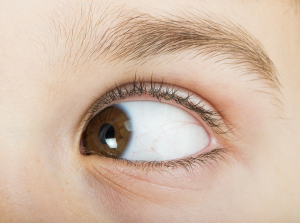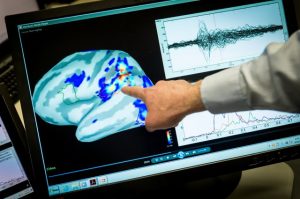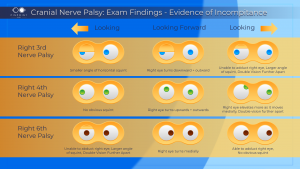Amblyopia is a vision development disorder in which one eye is unable to clearly focus on an image, even with the aid of eyeglasses or contacts. Amblyopia is often characterized by:
- Blurry vision (usually only affecting one eye)
- Begins during infancy
- Can become a bigger issue if not treated by age 6
- Caused by other conditions that interfere with clear vision in either eyes (see list below)
Amblyopia
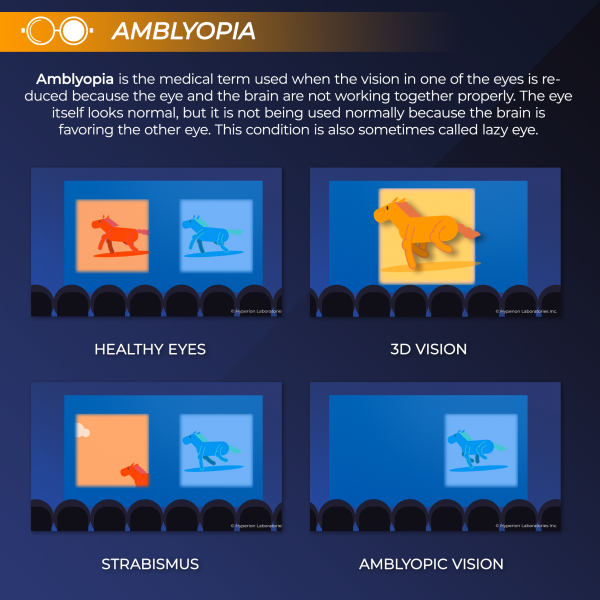
LOSING BINOCULAR VISION
To understand amblyopia, you first must understand that our eyes work like binoculars or 3D cameras. Each eye sees a slightly different view of the world, and when those images overlap in our visual cortex, we see the image in 3D.
However, with amblyopia, one eye is sending a different image than the other, healthy, eye is sending. When the two images fail to overlap properly, the brain eventually ignores the weaker of the two images (that from the amblyopic eye).
By cutting off the weaker of the two images, the brain lets us focus on more important image, but loses depth perception in the process. Eventually, the brain’s suppression of the amblyopic eye’s signal can even result in a permanent decrease in vision of the eye. Luckily, neuroplasticity makes it possible for those with amblyopia to improve their eyesight!
Prevalence
Amblyopia is estimated to affect up to 5% of the population.
RISK FACTORS & CAUSES OF AMBLYOPIA
- Ametropia
- Astigmatism
- Anisometropia
- Cataracts
- Cerebral Palsy
- Cranial Nerve Palsy
- Corneal Opacities
- Positive family history of amblyopia, strabismus, childhood cataracts, or glaucoma
- Retinoblastoma
- Strabismus
- Vitreous Hemorrhages
Ametropia
Ametropia is a disorder where the eyes are unable to correctly focus on objects at certain distances. There are 2 different types of ametropia: myopia (nearsightedness) and hyperopia (farsightedness).
Myopia, also known as nearsightedness,is a condition where people are able to see things that are nearby, but have trouble focusing on objects that are far away.
Hyperopia is the opposite of myopia, is also called farsightedness. In this condition, people are able to see things that are far away, but have trouble focusing on objects that are nearby.
Astigmatism
Astigmatism is any irregularity in the curvature of the cornea. Changes in the shape of the cornea lead to deformed images being projected onto the cornea and may lead to myopia or hyperopia. Causes of astigmatism include genetic disease, cataracts, injury, and in some cases surgery.
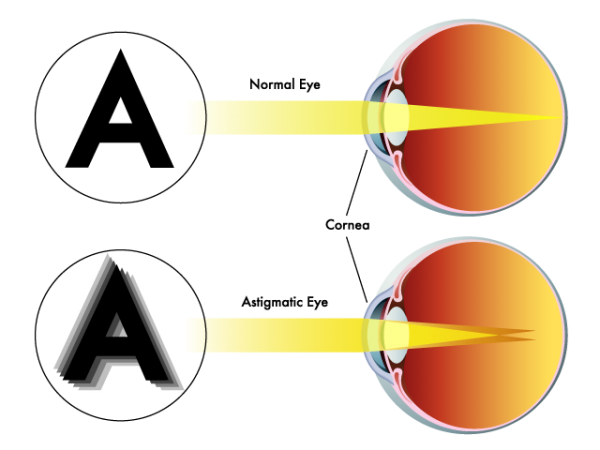
Anisometropia
Anisometropia is a condition in which both eyes have unequal refractive power. This means that one eye may be myopic while the other is hyperopic. Both eyes are required to project the same image in order for proper binocular vision. With unequal refractive power between eyes, the visual cortex of the brain will suppress vision in one of the eyes, leading to amblyopia.
Cataracts
A cataract is when the lens of the eye gets cloudy and begins to affect vision. It can occur in either or both eyes.
Cataracts are very common in senior citizens. By age 80, over 50% of Americans will either have a cataract or have had cataract surgery.
Most cataracts are related to aging, but some children are born with them or develop them at an early age. These are called childhood cataracts.
Cerebral Palsy
Cerebral palsy (CP) is a static neurologic condition caused by brain injury. In many cases, the injury occurred during the prenatal, perinatal, or postnatal periods of childhood development. CP may cause changes in oculomotor function, which can lead to strabismus and amblyopia. In patients with oculomotor dysfunction, treatment is often therapeutic.
Other visual concerns for patients with CP include cortical blindness and visual field loss.
Corneal Opacities
The cornea is dome-shaped to allow passage and of light through the eye and onto the retina. Any changes in the shape of the cornea can cause abnormalities of vision, such as myopia, hyperopia, and astigmatism.
Other corneal changes may be due to corneal damage from infection or injury. Infections that may include keratitis from herpes zoster or herpes simplex viruses. Injury can be from direct trauma or abrasions (scratches) due to foreign bodies.
Any sort of damage to the cornea can cause scarring, which decreases the clarity of the cornea and overall vision of the eye. Left untreated, these conditions can decrease the refractive power of the eye and may lead to amblyopia.
Retinoblastoma
Retinoblastoma is a rare form of cancer that rapidly develops from the young cells of the retina. It is the most common form of eye cancer in children and is almost exclusively found in young children.
Retinoblastoma is caused by a genetic defect in the Rb gene and can affect one or both eyes. Most cases are inherited.
Treatment of retinoblastoma include chemotherapy (chemical therapy), radiation therapy, laser therapy, and surgery. Surgery may result in complete or partial removal of the eye. Studies have shown that treatment of retinoblastoma may cause secondary strabismus and amblyopia. The same studies have also shown that treatment of the amblyopic eye with occlusion therapy has yielded significant improvement in vision. (1)
Strabismus
Strabismus is a condition where one eye looks directly at the object you are viewing, while the other is misaligned. This is commonly called a “lazy eye.”
Strabismus may develop during early childhood or may be the result of traumatic head injury. Current therapies include patching or invasive surgery.
Vitreous Hemorrhage
A vitreous hemorrhage is when blood leaks into or around the vitreous body. The blood then clouds the path that light must pass to focus on the retina. Symptoms include: Blurry vision, a reddish-brown tint to your vision, the appearance of frequent “floaters” in your field of vision, or even photopsia, which are brief flashes of light in a person’s peripheral vision.
This condition is seen mainly in older diabetics but presents also in young children from trauma and/or injury.

